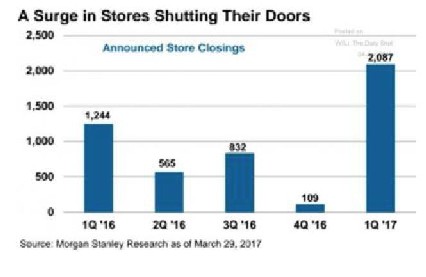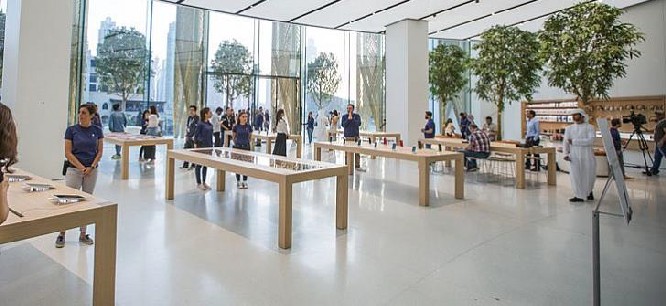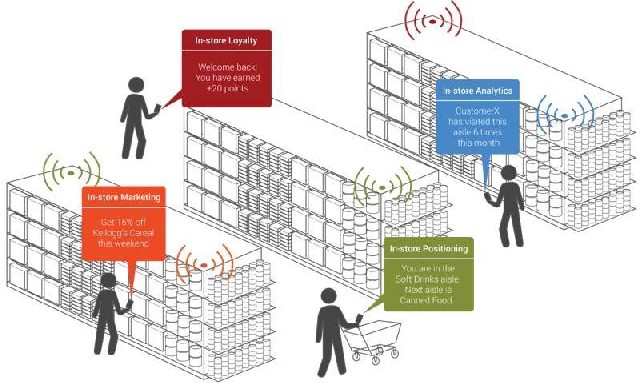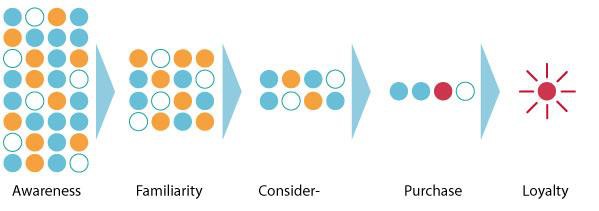2017 has been a disaster year for the US retail business. Major retail chains have already closed down stores or gone out of business. This negative trend – owing mostly to impressive increase in on line sales – stands to affect more than 10%
of the entire business, bearing significant consequences to all parties involved.
At this point, this trend is not as severe around the world. Big shopping malls are still doing good business and the majority of consumers are still preferring, most of the time, to shop in physical stores vs. online stores.
A compelling question though arises as to what could be an appropriate response of mainstream retail, in this intensely competitive world:
1. Immersive Consumer Experiences
We are living a culture of high expectations that goes beyond goods & services, as we have been accustomed to. The traditional notion of return on investment has given way to a new measure of marketing success i.e. return on relationship and return on experience.

Today’s consumer seeks authentic relationships with brands that involve active participation. In particular, they are looking for immersive experiences that fuel their imagination and creativity. The physical retail store and mall, lend themselves perfectly in unfolding these kind of experiences. As such, physical stores remain a crucial touch point and a unique differentiator in itself. This has been acknowledged by e-commerce sites, some of which have opened physical locations displaying their goods.
Important caveat:
Consumers have evolved in their sophistication as to what they would consider noteworthy experiences. Brand activations of the past, relating to brand sponsored concerts, sampling food or sniffing perfume at a booth in a mall, is not the expected transformative experience.
If the experience is exciting, it will be tweeted, instagramed and buzzed about at no cost. Word of mouth advocacy is priceless. Innovation in experiences is key and there are plenty of examples. Retailers & Brands alike need to understand this well.
2. Technology Adoption
Retailers, have traditionally relied far less on technology vs. their online counterparts.
For instance, e-commerce companies aim to emulate the personalized experience of shopping in-store on their websites, with the use of artificial intelligence systems.
To this effect, cameras in our everyday smart devices can be used to give real time advice on, what clothes to wear and recommend alternative styles based on personal profile.
To stay competitive, retailers need to embrace technology.
In doing so, tracking technologies are coming to the rescue by using beacons/sensors, tracking consumer behavior. The implications are quite significant.
Through a real time and data driven platform interface, a store, a mall, a museum a theme park, can provide a smartphone user with contextually relevant information based on their physical proximity to an object. Thus, you can push notifications and content e.g. discount coupons to a smart device, triggered by the GPS position of the smart device or its proximity to a beacon inside a mall or a store.
Reach consumers with a timely opportunity, a product or service that is aligned with their wants and needs and they will welcome proximity-based communication.

Proximity Marketing is here to stay and becomes easier by the day, as technologies evolve. Proximity-based consumer data, through the use of analytic techniques, will be used by retailers to generate useful behavioral insights. These insights will, in turn, guide retailers in the evaluation of their, promotions, consumer flaw patterns, hotspots, bottlenecks etc.
In the end, decisions will be made with regards to, in-store floor space, appropriate store displays, evaluation of the skill- set of the employees, suitable inventory levels, leading to higher productivity and efficiency.
Important caveat
a. Those who invest in data analytics i.e. shifting through big data to uncover patterns, market trends and consumer preferences, in order to make more informed business decisions, are quite often frustrated.
It is not the fault of analytics per se but rather the shortcomings of people who need to turn these analytics into action.
In particular, hiring the right people is of paramount importance. They should be well versed in marketing (online & offline), understand market research and have the emotional intelligence to articulate a proper data driven narrative which will persuade decision makers for corrective action.
b. More often than not, those retailers who have online business do better than those who do not. The online business though, of a retailer, should not be viewed as complimentary to its physical stores sales.
The retailer’s on line business should have their own discrete KPIs with a management structure of its own and managed as such.
3. The Consumer Journey Re-imagined
A consumer is encountering an enormous number of touch points, in his/her retail experience, starting before during and after a purchase has taken place and in variety of online/offline channels.
It is paradoxical, yet true, that a retailer may be good at the discrete touch points but still having to deal with an unhappy consumer.
This is not to diminish touch point importance, as touch points are usually owned by different functions within an organization’s structure, who are the repositories of tremendous experience. It is rather that the consumer, should be literally at the core of an organisation’s mindset and as such the purchase journey should be viewed solely from the consumer ’s point of view.

The major culprit here is the siloed nature of service delivery owed to, uncoordinated efforts of organizational/functional policies, processes, as well as, human behavior & culture.
The issue can be resolved by a clear strategic shift, to a consumer centric culture, sponsored by the top leadership. This, in many ways, will redefine a retailer’s business model.
It requires building a cross-functional team including, the best in class, brand suppliers of a retailer. The objective of the retailer’s cross functional team will be to:
3.1. Understand how shoppers manage selection, purchase and re-purchase process across different touch points e.g. at the shop level through a conversation with a sales representative, interaction with store displays, visit to website, queries to the call center etc.
3.2. Understand, by working with their brand suppliers how, digital, social media and physical store environment connect with each other and find ways to synergize, increasing profitability for both.
3.3. Amplify the value (not price) a shopper extracts through, the in-store experience looking at both functional and emotional benefits, including a shopper’s time and energy. Connecting at the emotional level with a consumer is key.
3.4. Review the entire commercial strategy; for instance, in the new emerging environment suppliers may be required to deliver directly to shoppers.
Important caveat
a. The internalization of the consumer ’s DNA into an organization’s structure is not an easy task as it involves many people and many functions.
This mind-shift requires the commitment and continuous attention of the higher echelons of leadership.
This will not be enough though if the lower management levels do not embrace it.
Primary responsibility rests with top management, a bottom-up effort though is a must for the success.
b. Mapping and understanding the consumer journey is one thing, acting upon it is another. It is overall, a long process but a well worth one holding the key to success.
In conclusion, retailers need to master the consumer/shopper journey and make it truly a part of their own business DNA.
During this process, they will become, keenly aware, of the need to adopt advanced big data technologies, as well as, create the appropriate in-store experiential environment. This will lead to a heightened consumer satisfaction and an enduring competitive advantage.

